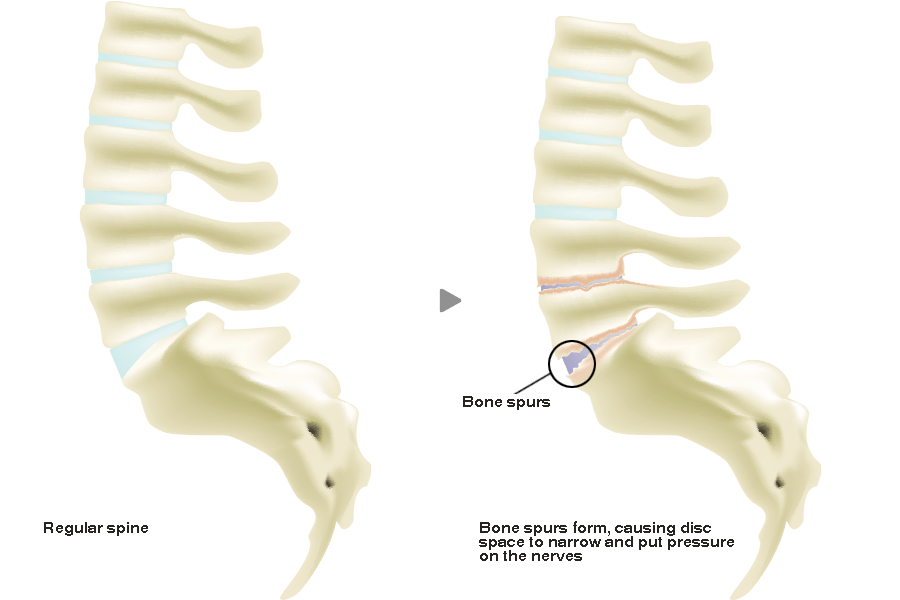
Lumbar osteoarthritis is back pain caused by age-related changes in the lumbar spine that result in the formation of bone spurs called osteophytes, or deformities of the spine. As the deformity progresses, it can lead to spinal canal stenosis. In severe cases of lumbar osteoarthritis, patients may experience coldness and numbness in the legs, and may not be able to walk for long periods of time.
What are the causes of osteoarthritis of the lumbar spine?
It is mainly due to aging, work environment, and exercise.
Intervertebral disc degeneration, instability of the lumbar spine, bone deformity due to contact between lumbar vertebrae, and formation of bone spurs.
The progression of these deformities and degenerative changes causes damage to the bones, intervertebral discs, and nerves, which leads to inflammation, resulting in pain. As the deformity progresses, the spinal canal and nerve pathways become narrower, resulting in spinal stenosis, spondylolisthesis, and scoliosis.
Generally, lumbar osteoarthritis is first treated with conservative therapy. If symptoms do not improve with conservative treatment and are prolonged, surgery is often suggested. However, there are cases in which the inflammation does not subside after surgery and does not improve, or in which the pain recurs. In this case, it is not a fundamental treatment it is not only the intervertebral disc or lumbar spine, but constitution, muscles, and ligaments may be other factors involved as the cause of pain.
We believe that if we can control the deformation of the intervertebral disc, we can prevent inflammation related to nerve compression, such as bone deformity and ligamentous hypertrophy.
As a treatment for this, disc repair therapy using the Cellgel method restores disc function by repairing the torn annulus fibrosus and filling the water content of the nucleus pulposus inside.
Written by Tadaaki Minowa, Clinic Director.



